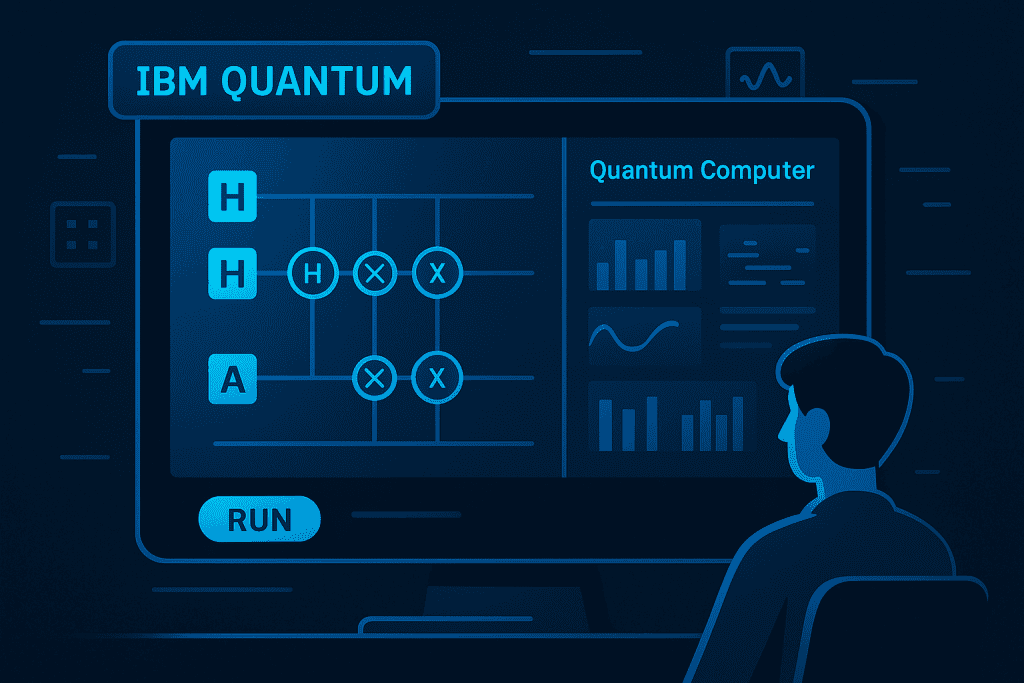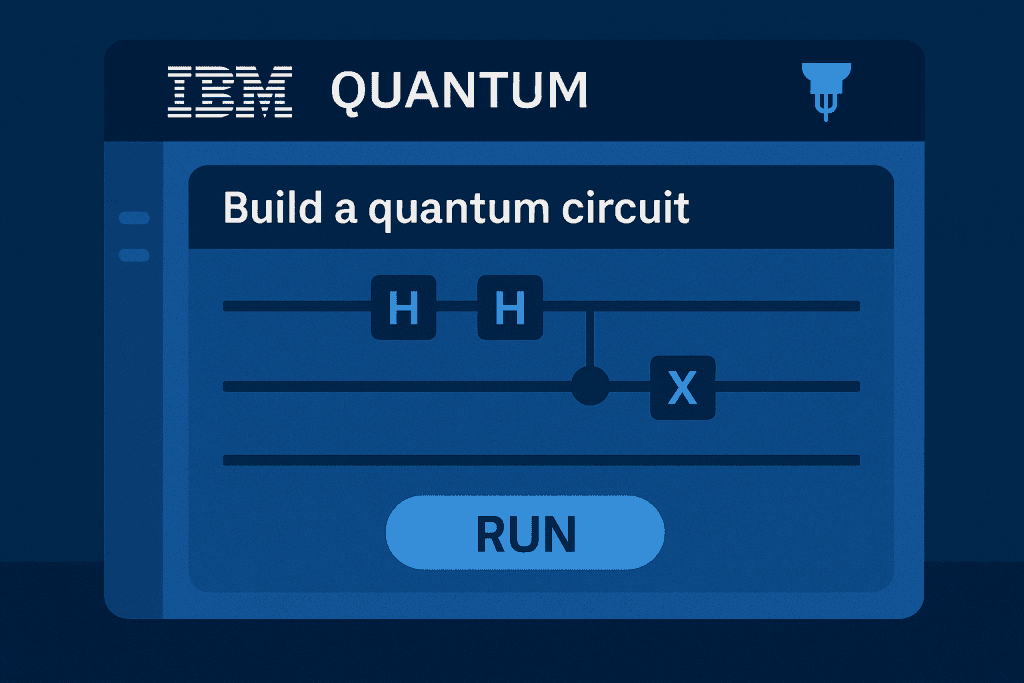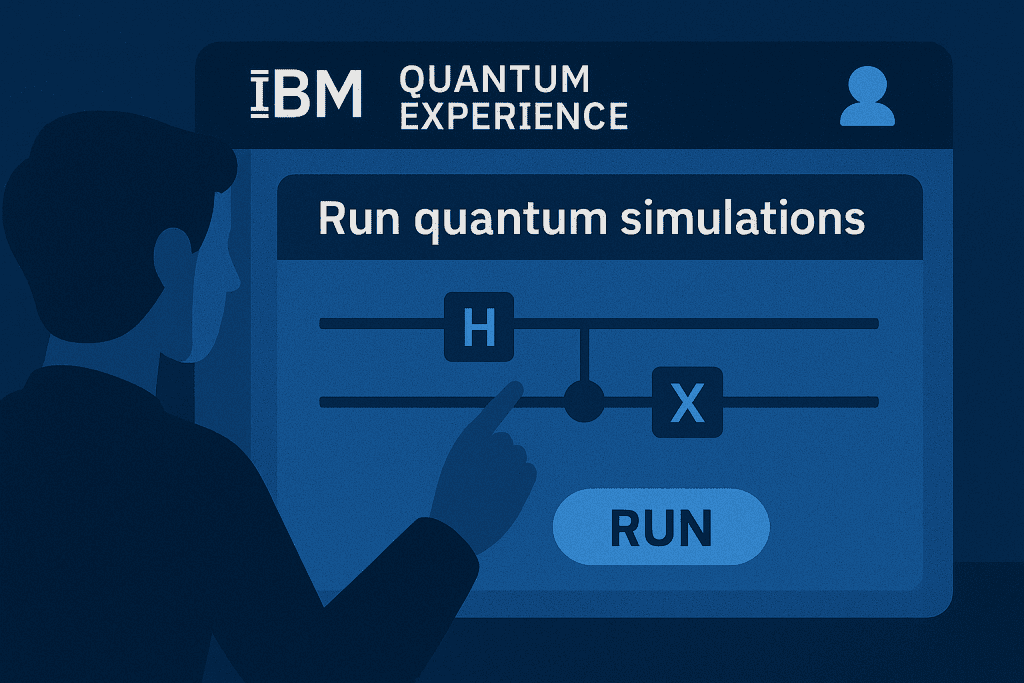
IBM Quatum Computer: Quantum computing is a revolutionary technology that leverages the principles of quantum mechanics to perform computations far beyond the capabilities of classical computers. Getting started with quantum computing using IBM’s Quantum Computer opens the door to exploring cutting-edge applications in cryptography, machine learning, optimization, and beyond. Whether you’re a student, a professional, or a technology enthusiast, learning how to interact with IBM’s quantum systems is an exciting way to stay ahead in this evolving field. This guide will provide clear, step-by-step instructions to help you access and utilize IBM’s quantum computing platform effectively.
Materials or Tools Needed
Before diving into quantum computing of IBM quantum computer, make sure you have the following tools and prerequisites in place:
Prerequisites:
- Basic understanding of programming concepts (Python preferred).
- Familiarity with linear algebra and quantum mechanics is helpful but optional.
- IBM Quantum account (registration required).
Tools:
| Material/Tool | Description |
|---|---|
| Internet Connection | A reliable connection for accessing IBM Quantum online tools. |
| Computer/Laptop | Any device capable of running Python and accessing the web. |
| Qiskit Library | IBM’s open-source quantum computing development framework. |
| IBM Quantum Account | Free account to access IBM Quantum Experience. |
Step-by-Step Instructions
Step 1: Create an IBM Quantum Account
Visit the official IBM Quantum Experience website and sign up for a free account. Complete the registration form, verify your email address, and log in to access the user dashboard.
Step 2: Set Up Your Development Environment
Install Python from python.org, if it is not already installed. Create a virtual environment using your command-line interface and activate it. Once ready, install the Qiskit library by running the following command:
bashCopyEditpip install qiskit
This will allow you to write, simulate, and run quantum circuits within your development environment.
Step 3: Explore the IBM Quantum Dashboard
After logging into the IBM Quantum Experience platform, familiarize yourself with the dashboard. Browse available quantum processors and simulators. Under the “Account” section, locate and copy your personal API token—this will be required for Qiskit integration.
Step 4: Write Your First Quantum Circuit

Open a Python IDE or terminal and begin coding your first quantum circuit. Start with a simple example using one qubit and one classical bit. The following snippet demonstrates the basic structure:
pythonCopyEditfrom qiskit import QuantumCircuit, Aer, execute
qc = QuantumCircuit(1, 1)
qc.h(0)
qc.measure(0, 0)
This circuit places the qubit in superposition using a Hadamard gate and measures the result.
Step 5: Simulate and Visualize Results
Use Qiskit’s built-in simulator to test your circuit locally. Run the simulation with:
pythonCopyEditsimulator = Aer.get_backend('qasm_simulator')
job = execute(qc, simulator, shots=1000)
result = job.result()
counts = result.get_counts(qc)
print(counts)
This step helps validate the circuit before deploying it to a live quantum processor.
Step 6: Run Your Circuit on a Real IBM Quantum Computer
To use an actual quantum system, load your IBM Quantum account credentials in Qiskit using your API token:
pythonCopyEditfrom qiskit import IBMQ
IBMQ.save_account('YOUR_API_TOKEN', overwrite=True)
IBMQ.load_account()
Select a real backend (e.g., ibmq_quito), submit the job, and analyze the output once it completes.
To Understand More about Quantum Computing watch this video:
Tips for Using IBM Quantum Computer
Best Practices
| Tip | Description |
|---|---|
| Start with Simulators | Debug your code before using actual quantum devices |
| Explore Qiskit Tutorials | Learn more through Qiskit documentation |
| Join the Community | Engage in forums and Slack channels for peer support |
Common Mistakes to Avoid
| Mistake | Solution |
|---|---|
| Forgetting to activate virtual env | Activate it before using Qiskit |
| Misusing the API token | Check that your token is correctly added to your config |
| Overloading processors | Submit fewer jobs to avoid delays |
Conclusion

The IBM Quantum Computer offers a hands-on way to explore the future of computation. From account setup to running circuits, this guide has introduced the essential steps to begin your quantum journey. Whether you’re building your first circuit or diving into quantum simulations, these tools make it easier to learn and experiment. Continue exploring Qiskit, join the global community, and take your knowledge further into the exciting world of quantum computing.
FAQ
What do I need to start using IBM Quantum Computer?
You need a basic understanding of Python, a computer with internet access, and a free IBM Quantum account. Installing Qiskit will allow you to build and run quantum circuits.
Can I test quantum circuits without a real quantum computer?
Yes. Qiskit includes simulators that let you run and debug quantum circuits locally before using actual quantum processors.
Is IBM Quantum Computer suitable for beginners?
Yes. The platform is designed for learners at all levels, including students and enthusiasts. Qiskit tutorials and community support make it easy to get started.
Resources
- IBM: Learn More About IBM Quantum Computing
- The University of Melbourne: Know what is What is IBM Quantum?
- TechnoInformed: Everything you need to know about IBM quantum computing
